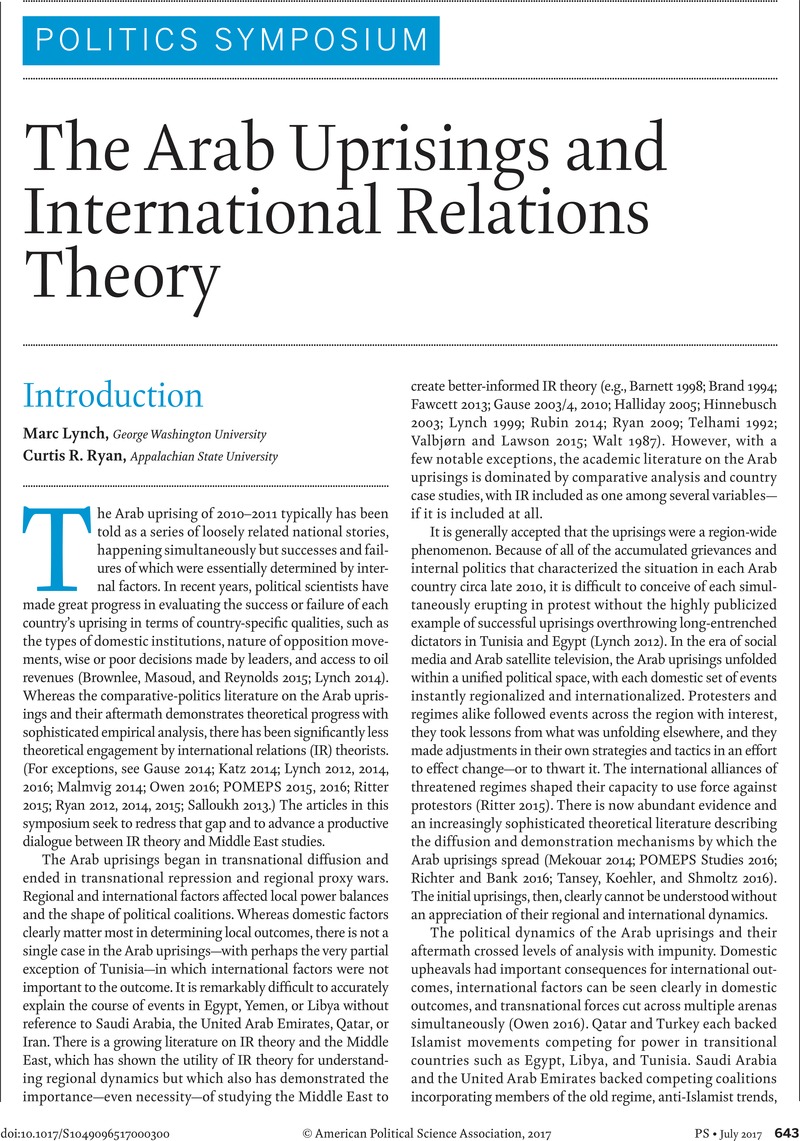Crossref Citations
This article has been cited by the following publications. This list is generated based on data provided by Crossref.
Schraeder, Peter J.
Endless, Brian
Schumacher, Michael J.
and
Lynn Dobbs, Kirstie
2019.
Revolutionary diplomats? Introduction to the study of North African foreign policies within the context of the Arab Spring.
The Journal of North African Studies,
Vol. 24,
Issue. 4,
p.
540.
Lynch, Marc
2021.
Taking stock of MENA political science after the uprisings.
Mediterranean Politics,
Vol. 26,
Issue. 5,
p.
682.
Bank, André
and
Busse, Jan
2021.
MENA political science research a decade after the Arab uprisings: Facing the facts on tremulous grounds.
Mediterranean Politics,
Vol. 26,
Issue. 5,
p.
539.
Costantini, Irene
and
Hanau-Santini, Ruth
2023.
International Relations and Area Studies.
p.
55.
Dell’Aguzzo, Loretta
and
Diodato, Emidio
2023.
Patron-client state relations and the geopolitics of authoritarian survival and breakdown: evidence from the MENA countries.
Contemporary Politics,
Vol. 29,
Issue. 1,
p.
43.
Moghadam, Valentine M.
2024.
The gendered politics of Iran-U.S. relations: sanctions, the JCPOA and women’s security.
Third World Quarterly,
Vol. 45,
Issue. 7,
p.
1199.



